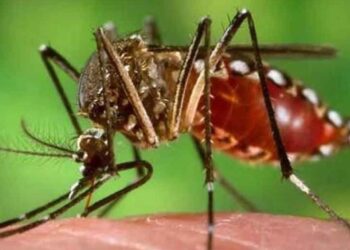In a pivotal meeting today, the GST Council, led by Union Finance Minister Nirmala Sitharaman, will deliberate on proposals that could reshape consumer costs across India. From lowering taxes on life and health insurance to potentially imposing a new 35% tax slab on sin goods, the council’s decisions could have widespread financial implications.
Lower Tax Rates on Insurance Premiums
A significant item on the agenda is a proposal to reduce GST rates on life and health insurance premiums. This could provide much-needed relief to individuals and families seeking financial security. For senior citizens, the potential tax exemption on health insurance premiums could represent a meaningful step toward affordable healthcare.
Additionally, individuals paying premiums for health insurance with coverage up to ₹5 lakh may also benefit from a tax exemption. This move, if approved, could encourage more people to opt for health insurance, easing the burden on public healthcare systems.

Higher GST for Luxury and Sin Goods
The council is also examining proposals to hike GST rates on luxury items such as high-end wristwatches, shoes, and apparel.
- Luxury Apparel and Shoes:
- Garments priced up to ₹1,500 would remain at 5%.
- Items between ₹1,500 and ₹10,000 could see a jump to 18%.
- Premium garments above ₹10,000 may attract a hefty 28% tax.
- Similarly, shoes priced above ₹15,000 per pair might move to the 28% slab, up from the current 18%.
- Sin Goods: A special 35% GST slab for sin goods, including aerated beverages, cigarettes, and tobacco products, is being considered. This is a step toward discouraging the consumption of these items while boosting revenue.
Changes in Taxation for Used Vehicles and EVs
Used electric vehicles (EVs) and smaller petrol and diesel cars could face a rate hike from 12% to 18%, aligning them with larger vehicles in the used car market. This adjustment aims to rationalize the tax structure but may impact affordability for budget-conscious buyers.
Food Delivery Platforms May Benefit
The council might lower the GST rate for food delivery platforms like Swiggy and Zomato to 5% (without input tax credit), down from the existing 18% (with ITC). This change could reduce the cost of ordering food online, providing relief to consumers and potentially boosting business for these platforms.
Aviation Turbine Fuel in GST Fold?
Another key proposal is the inclusion of Aviation Turbine Fuel (ATF) under the GST framework. With fuel costs making up a large chunk of airline operating expenses, this could be a game-changer for the aviation sector. However, the specifics of taxation and potential benefits are yet to be outlined.
Summary of Potential Changes
| Item | Proposed Change | Current Rate |
|---|---|---|
| Life & Health Insurance Premiums | Lowered/Exempt | 18% |
| High-End Wristwatches & Apparel | Raised to 28% | 12%-18% |
| Shoes Above ₹15,000 | Raised to 28% | 18% |
| Sin Goods (Tobacco, Beverages) | New 35% Slab | 28% |
| Used EVs & Small Cars | Raised to 18% | 12% |
| Food Delivery Platforms | Lowered to 5% (No ITC) | 18% (With ITC) |
Broader Implications
The proposals reflect an effort to strike a balance between rationalizing tax rates, incentivizing essential services like health insurance, and generating revenue from non-essential luxury and sin goods. While consumers may find relief in areas like insurance and food delivery, the increased cost of luxury items might temper spending in that segment.
With over 148 items up for discussion, today’s GST Council meeting could usher in significant policy shifts. As businesses and consumers await the outcomes, the council’s decisions are set to influence spending patterns, industry growth, and revenue generation for months to come.









